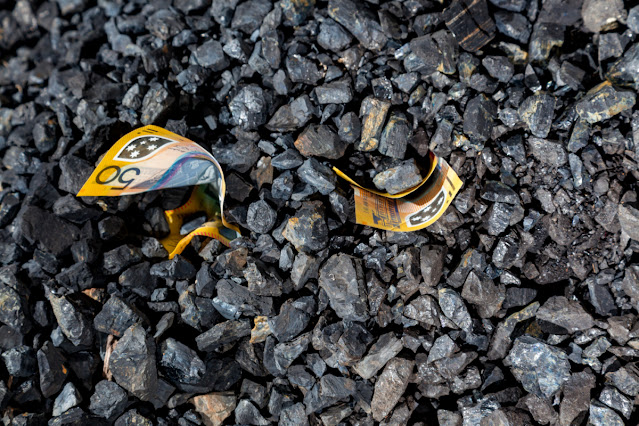Coal Plants and Corruption
 |
| Coal and Corruption (image: Getty) |
Written by Sean Kang (high school intern, June/July 2021)
According to a study conducted by Wood Mackenzie, an established consultancy group that supplies data about chemicals, global energy, and renewables, states that coal plants will “...continue to be the dominant fuel source in power generation in Southeast Asia, [and] its use will grow and peak in 2027 before slowing” (Tan).
Today, coal plants still appear to be a prevalent source of energy in countries concentrated in the South-East Asia region and continue to pose grave threats to its surrounding environment: acid rain, global warming, water pollution, air pollution, and etc. However, although such harmful implications of the coal plant industry seem apparent to the public and environmentalists, one greatly overlooked aspect is the corruption that surrounds the construction of these coal plants. In this context, corruption, according to Transparency International, an anti-corruption organization, is “the abuse of entrusted power for private gain” (What is Corruption?).
So how is corruption related to the coal plant industry and why is it the determining factor to harmful environmental impact?
The answer, in simple terms, is both money and power. One notorious example is the Cirebon 2 coal plant project, which is a “$2bn expansion to add a 1,000MW ultra-supercritical coal-fired power plant” (Cirebon Coal-Fired Power) in West Java, Indonesia. Although this project’s intended purpose was to meet Indonesia’s growing energy demand, there was speculation surrounding how the money was handled.
Egi Primayogha, a researcher with the NGO Indonesia Corruption Watch (ICW), asserts that “It’s become clear to see that coal power plant projects are a bribery hotspot for many people” (Gokkon). In fact, one major shareholder to the Cirebon 2 project, the Hyundai Engineering and Construction, admits to bribing an Indonesian politician a fee of “6.5 billion rupiahs ($460,000) out of a requested 9.5 billion rupiah” (Min-Ho).
In another scandalous coal-plant project in Riau, Indonesia, a Golkar Party politician Eni Maulani Saragih was accused of accepting 4.75 billion rupiahs and sentenced to six years in prison.
As the prevalence of corruption surrounding bribery and money laundering in multi-million dollar coal projects continues to increase, government officials should enforce policies and more importantly, environmentalists should be aware that the root cause of environmental destruction is corruption.
So how can we as a society shift the tides so that future generations experience a greener Earth unaffected by the forms of corruption so common today?
The first step to take is to urge the need for change in the government’s environmental policies. As evidenced by the South Korean Climate Transparency Report of 2020, one key opportunity to enhance climate change is lifting renewable energy barriers. Countries like South Korea have a stringent policy regarding land and maritime policies, and it is absolutely necessary should the government make reforms in such areas.
The next step to take is to verify that there is no form of corruption taking place when a big environmental project is implemented. It is crucial to prevent corruption by understanding the law and other regulations, conducting a risk assessment, protecting whistleblowers, and reviewing policies.
Citations
https://www.transparency.org/en/what-is-corruption
https://www.power-technology.com/projects/cirebon-coal-fired-power-plant-expansion-west-java/
https://www.koreatimes.co.kr/www/tech/2019/05/693_268175.html
Reviewed by:
Abraham Sumalinog
Comments
Post a Comment